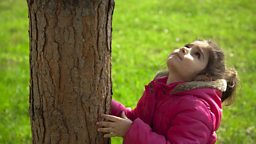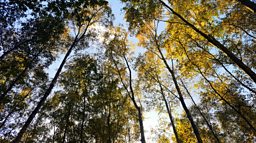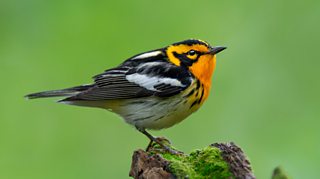What trees can teach us on our daily walk
Nature can tell us a lot — if we choose to pay attention.
The natural world harbours clues which can help us pinpoint our location, such as the position of the sun and stars. But there are signs closer to the ground that we can easily pick up and use, too.
Speaking on the Scotland Outdoors podcast, Natural Navigator, Tristan Gooley, revealed that studying trees can help us identify where we are.
“Natural navigation is all about puzzle solving, he explained. "It starts with a really simple question: 'Which way am I looking?', and we can use signs to answer that."

If your daily exercise route crosses through parks or woodland, these tips can help you get started.
Look at the size of the trees
According to Tristan, the height of trees compared to others nearby can reveal a lot: “Trees near the south west edge of any exposed woodland are shorter. They grow shorter when they’re hit by the wind, and our winds come from the south west, most often."
Check the size of leaves
Exposure to sunlight will impact the size of leaves, as Tristan explains: "Leaves on the south side of trees are smaller, lighter in colour and thicker to feel because they’re sun leaves. On the north side of the tree they are bigger, darker and thinner because they are shade leaves".
Look for the tick shape
Trees react to their environment, says Tristan.
"They need light… so they grow towards it. Over time what happens is if a branch and the leaves and the twigs on it are harvesting light and energy, and producing more energy, the tree directs more resources there and grows bigger. So we end up with bigger, longer, stronger branches on the south side.
"Because they’re growing towards the light the branches on the south side grow towards the southern sun which is closer to horizontal. On the north side there’s no direct sun so they grow up closer to vertical to the brightest area, which is the sky. This gives us what I call the 'tick effect'."

Are roots visible?
Tristan suggests tree roots can act as a reliable compass.
"A lot of people imagine roots are only visible underground, but we often see them melding into the trunk above ground. They’re passing up water and minerals to the tree but one of their main jobs is structural, as guy ropes. These guy roots grow bigger, longer and stronger on the side the wind comes from: the south western side."
Podcast
-
![]()
Scotland Outdoors
Helen Needham spices up her daily exercise with Natural Navigator, Tristan Gooley.
Latest features from ÃÛÑ¿´«Ã½ Scotland
-
![]()
'Wild swimming helps me process the grief of losing my son'
The benefits of cold water therapy.
-
![]()
Winter adventures are appealing, but an expert advises caution
Trips in winter require particular knowledge and skills.
-
![]()
The rescuers: Why volunteers risk their lives in mountain emergencies
Landward meets members of the Cairngorm Mountain Rescue Team.
-
![]()
‘Look for the light’ – practical tips to help you through another winter with SAD
Useful advice and tips to combat low moods at this time of year.
-
![]()
How you could be a binge drinker without even knowing
Binge drinking is classed as fewer units than many people may realise.
-
![]()
How chocolate biscuits and drama classes helped one man leave prison behind
The healing power of creativity.
-
![]()
'When people believe in you, it’s life-changing'
Author Graeme Armstrong revisits the man who helped turn his life around.
-
![]()
The 'breath-taking' display of US birds swept on to British soil
Recent storms have brought rare birds to our shores.
-
![]()
Six things we learned about Alan Cumming on Take the Floor (Spoiler: includes accordions)
The actor spoke to Take the Floor's Gary Innes.
-
![]()
How street gangs trap young men in a dangerous cycle of violence
The almost inescapable pull of life in a gang.
-
![]()
Why stylist Gok Wan believes there's no such thing as bad fashion
The fashion expert says we should stop following rules and do what feels right.
-
![]()
Is sending a CV still the right way to apply for a job?
They've been central to job applications for years, but are they worth it?
















